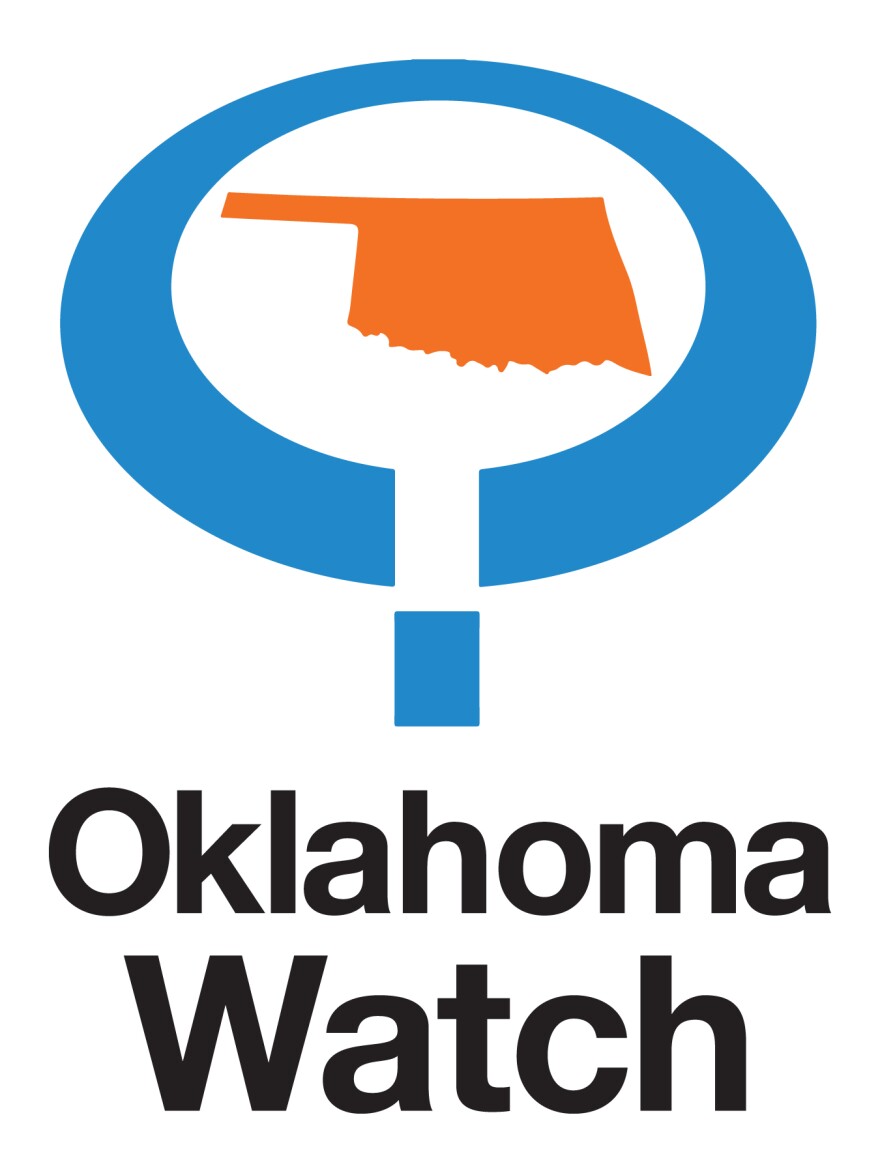The five bunk beds, each with a white pillow and tightly fitted sheets, sit empty in the basement of the Church of the Open Arms in northwest Oklahoma City.
Nearby shelves hold donated clothing, cleaning products and young-adult novels.
All are waiting to be used by homeless teenagers. But for months, the beds and items have been sitting untouched by the young.
That is dismaying to Penny Reynolds, who heads a nonprofit youth-advocacy group, Sisu Youth, that set up the overnight shelter at the church. Reynolds’ group is short of funding to be able to open the facility, which she says is sorely needed for a growing problem in Oklahoma City and statewide.
But she also knows that just opening the shelter – intended as the first standalone one serving only youths ages 15 to 17 – won’t be enough. Any provider reaching out to homeless teens, especially LGBT youths, faces a challenge in overcoming their distrust and fears, Reynolds said. She is confident that with paid staff or volunteers, she can attract them off the streets and offer help.
Three miles to the south, at the downtown City Rescue Mission, empty beds for homeless youths also can be found. The faith-based nonprofit’s new wing for up to 150 youths is open but remains unused for the most part because the mission has had trouble finding and attracting them.
The latest figures from the state Department of Education the number of homeless students in Oklahoma has soared by 55 percent over four years, to 27,161 in 2014-2015.
Of that total, about 1,640 were reported as living in unsheltered locations, such as cars, parks, campgrounds, abandoned buildings and temporary trailers. More than 21,900 were “doubling up,” meaning they were runaway or unaccompanied youths living with relatives or friends.
“We absolutely do have a huge homeless youth problem in Oklahoma,” said state Sen. Kay Floyd, D-Oklahoma City, who authored legislation last year to study the problem. “And it’s not just an urban problem, it’s also a rural problem. People are shocked when they see just how many children are homeless.”
Despite rising concerns, social-service group representatives say that identifying homeless youths and providing effective support remain a challenge.
Oklahoma City’s one-day count of homeless people in January 2015 found only two unaccompanied youths under age 18. The city’s report explained, “The homeless youth population tends to be hidden and transient, often trying to blend in with peers who are not homeless.”
The unknowns were a driving factor in passage of the law last year that directed the Oklahoma Commission on Youth and Children to examine the problem and make recommendations.
Among those, released in December:
- Define child homelessness.
- Create a data repository for tracking the problem.
- Revise state law to allow youths to gain “supervised emancipation” from parents or guardians.
- Develop licensing standards for drop-in or day shelters.
A bill that defines child homelessness more precisely was approved earlier this year. No additional funding was sought to implement other recommendations.
Read The Full Commission Report

'No One Has Come'
City Rescue Mission, which serves the homeless, opened up its new wing for youths in January. The wing features a long row of small, college dorm-styled rooms that can accommodate the 150 youths each night.
But fewer than 10 youths have used the facility since it opened. On a recent Tuesday, the youth wing was empty with the exception of a mother and her child who were using a room as overflow for the next-door family shelter.
“We thought we’d open up the building and, as they say, if you build it, they would come,” said Tom Jones, director of the 56-year-old organization. “We’ve built it, and no one has come.”
Jones said he and has staff were surprised that so few teenagers have sought help at the shelter, but it’s not that there isn’t a need for the services.
“Trust me, homeless youth are out there and they are on the run,” he said. “They are scared to death they are going to be sent back home, so they don’t self-identify (as homeless).”
One of the problems Jones cited is similar to the obstacle faced by Sisu Youth: The economic downturn has dampened charitable giving, which limits the amount of marketing and outreach needed to get the word out about the youth wing.
“I think that outreach is critical,” he said. “But it takes money, it takes resources and it takes organization.”
Jones said another barrier is that homeless youths, many of whom attend school and have friends in established homes, feel a stigma in seeking help from a homeless shelter.
In addition, because an estimated 40 percent of homeless youths identify as lesbian, gay, bisexual or transgender, they may be wary of turning to a faith-based charity such as his.
“There is a pretty sizable percentage of the kids who have run away because their family has totally shut them down because they’ve come out,” he said. “But it doesn’t matter to me if you are gay. We don’t even ask. I just want them to be safe.”
Jones said he thinks a deeper concern is that minors are afraid that if they seek help, they will be sent back to their parents or legal guardians. In many cases, their home situations are toxic or dangerous, involving drugs or abuse. But accredited centers, including both City Rescue Mission and Sisu Youth are, have no obligation to turn over unaccompanied youths to their parents, even if they are a minor, he said.
The Empanicpation Issue
As paradoxical as it might seem for youths who are adrift, making it easier for them to become legally independent of their parents or guardians could help stabilize their lives, at least for some youths, child advocates and providers say.
Like most states, Oklahoma allows those under 18 to petition a court to grant them emancipation and sever their legal relationship with parents or guardians.
Michael Santos, an attorney with the National Law Center on Homelessness and Poverty, said the status can empower youth by freeing them of concerns they will be returned to the home environment that they fled. It also allows them to takes steps to gain financial independence or find living arrangements.
“Unaccompanied youth (who are not emancipated) are unable to rent apartments, buy cars to transport to school or work, or enter into other contracts essential for independent living,” he said. While legal restrictions are intended to protect minors from making bad choices, instead they often “place huge barriers in the way of many fully capable unaccompanied youth who are simply trying to survive.”
Child advocates say Oklahoma’s current process for emancipation is so difficult, costly and time-consuming that few youths see it as a real option.
“They just don’t have the money to get an attorney and get in front of a judge and all of that,” said Lisa Smith, executive director of the Commission on Children and Youth.

It is unclear how many youths in the state are good candidates for emancipation, Smith said. But a commission committee that produced the recommendations suggested looking at “supervised emancipation,” in which minors are given rights to take some actions but, for others, must get approval from an authority figure, such as a case worker. This flexibility allows youths to receive support services without entering state custody, the committee wrote.
At least seven states offer an emancipation process outside of the judicial system, according to the National Law Center on Homelessness and Poverty. In Missouri, for example, minors can enter into contracts for housing, employment, vehicle purchases, student loans, admission to schools, medical care, bank accounts and admission to domestic violence and homeless shelters, Santos said.
Opening up the emancipation process isn’t without pitfalls. Granting minors rights that are usually reserved for adults could backfire if a minor doesn’t understand the consequences or is not mature enough to handle the responsibilities.
Kami Kuykendall, president and CEO of Youth Services of Oklahoma County, said she thinks it is a good idea to study the issue, but she cautioned against moving forward too quickly.
“We need to analyze and assess to see what all the implications are,” she said.
Reynolds, of Sisu Youth, said she is encouraged by the greater attention being paid to the problem by state and local officials.
She was homeless herself when she was 19 and now fosters four children in addition to running the nonprofit, which previously offered a day shelter for youths. As the group looks for funding, she is still hopeful that the shelter can open later this year if enough volunteers come forward.
“Just since I opened our day center in June 2014, there has been so much more awareness brought to this issue just in Oklahoma City,” she said. “And even though our (night shelter) is small, I just want a place where they know they are valued.”








